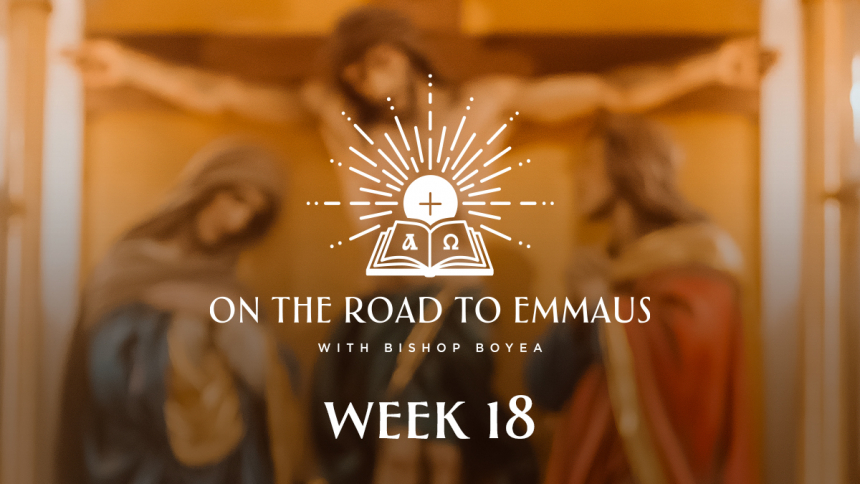
Friday, October 13, 2023
Dear Sisters and Brothers in Christ,
“I believe!” My venerable predecessor as Bishop of Lansing, Bishop Carl Mengeling, is always congratulating folks by saying, “They are believers!” And he says it with much acclaim. Believing takes two forms: we believe in someone in whom we place our trust. Secondly, we believe something. It is this second meaning that calls for attention in this, Week 18 On the Road to Emmaus as we begin or exploration of the Creed, that great litany of belief that we proclaim every Sunday at Holy Mass.
We begin the Creed with that great statement: “I believe” or, in Latin, Credo. The first creed which was said for most of us was the series of promises made by our parents and God-parents at our Baptism. They, for us, renounced sin and then professed faith in God the Father, in Jesus his Son, and in the Holy Spirit, as well as in the Church. It seems likely that by about 200 A.D., the Church in Rome and probably other Churches as well had the core of what we now call the Apostles Creed. This is sometimes said at Mass. It too speaks of belief in God the Father as creator, in Jesus, his Son, born of the Holy Spirit and Mary, who suffered, died, and was raised, and in the Holy Spirit, the Church, the forgiveness of sins, and the resurrection from the dead. This is the prayer, more fully developed, which we say at the beginning of the Holy Rosary.
Our most common creed, said at Mass, is the Nicene Creed. This creed was not merely an expression of what we believe, but was deliberately written to eliminate things we do not believe. That is why its first version was written by an Ecumenical Council in 325 at the city of Nicaea. Bishops from around the Roman world of that day had gathered to address a heresy which was questioning the full divinity of Jesus Christ. That is why we have the phrase, “consubstantial with the Father,” to indicate that Jesus is divine, one in substance with the Father.
The text of our Creed was finalized in 451 AD at another council, held at Constantinople, present-day Istanbul. There, the council Fathers wanted to ensure the divinity of the Holy Spirit and Mary being the Mother of God against those who were denying these truths. That is why we have the phrases “by the Holy Spirit was incarnate of the Virgin Mary” and the development of the text about the Holy Spirit: “the Holy Spirit, the Lord, the giver of life, who proceeds from the Father.”
In western Europe, the phrase, “and the Son” or filioque in Latin, began to be added by some Churches to the Creed in the 500s, though this change was not accepted among the Eastern Churches. At the same time, this finalized Creed was being used at Mass. Eventually, the version we say today was accepted by the entire Western Church and Eastern Church (except for the filioque, which remains a source of contention to this day).
This whole process points to the importance of being as clear as we can about what we believe knowing that our understanding is always incomplete. And while we may often say these words at Mass without really thinking about them, it is good on occasion to recall that much sweat, blood, and tears went into its production, beginning with the very blood of our Lord himself.
This takes us back to the first meaning of “belief,” that is, trusting in the Lord Jesus who came to reveal the Father to us and who continues to do so through the Holy Spirit. Jesus promised he would be with us to the end of the world. His gift of the Holy Spirit is the way which he keeps his promise. We therefore place all our trust in Him and we will encounter him deeply in the rest of the Mass as we move beyond the Creed.
And so, to this week’s challenge: Pray the Creed each day and then share with your household, or with a friend, what is most inspiring to you about all the wonderous truths contained within the Creed.
Until next week, may God bless you all.
+ Earl Boyea
Bishop of Lansing
